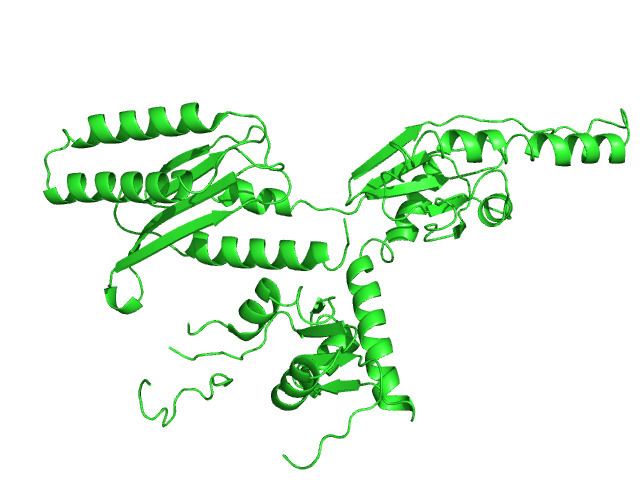Species Human Entrez 2107 | Human Mouse Ensembl ENSG00000120705 | |
 | ||
Aliases ETF1, D5S1995, ERF, ERF1, RF1, SUP45L1, TB3-1, eukaryotic translation termination factor 1 External IDs OMIM: 600285 MGI: 2385071 HomoloGene: 3475 GeneCards: ETF1 | ||
Eukaryotic translation termination factor 1 (eRF1), also known asTB3-1, is a protein that in humans is encoded by the ETF1 gene.
In eukaryotes, this is the only release factor (eRF) which recognizes all three stop codons. The overall process of termination is similar in prokaryotes, but in the latter 3 separate release factors exist, RF1, RF2 and RF3.
Function
Termination of protein biosynthesis and release of the nascent polypeptide chain are signaled by the presence of an in-frame stop codon at the aminoacyl site of the ribosome. The process of translation termination is universal and is mediated by protein release factors (RFs) and GTP. A class 1 RF recognizes the stop codon and promotes the hydrolysis of the ester bond linking the polypeptide chain with the peptidyl site tRNA, a reaction catalyzed at the peptidyl transferase center of the ribosome. Class 2 RFs, which are not codon specific and do not recognize codons, stimulate class 1 RF activity and confer GTP dependency upon the process. In prokaryotes, both class 1 RFs, RF1 and RF2, recognize UAA; however, UAG and UGA are decoded specifically by RF1 and RF2, respectively. In eukaryotes, eRF1, or ETF1, the functional counterpart of RF1 and RF2, functions as an omnipotent RF, decoding all 3 stop codons.
